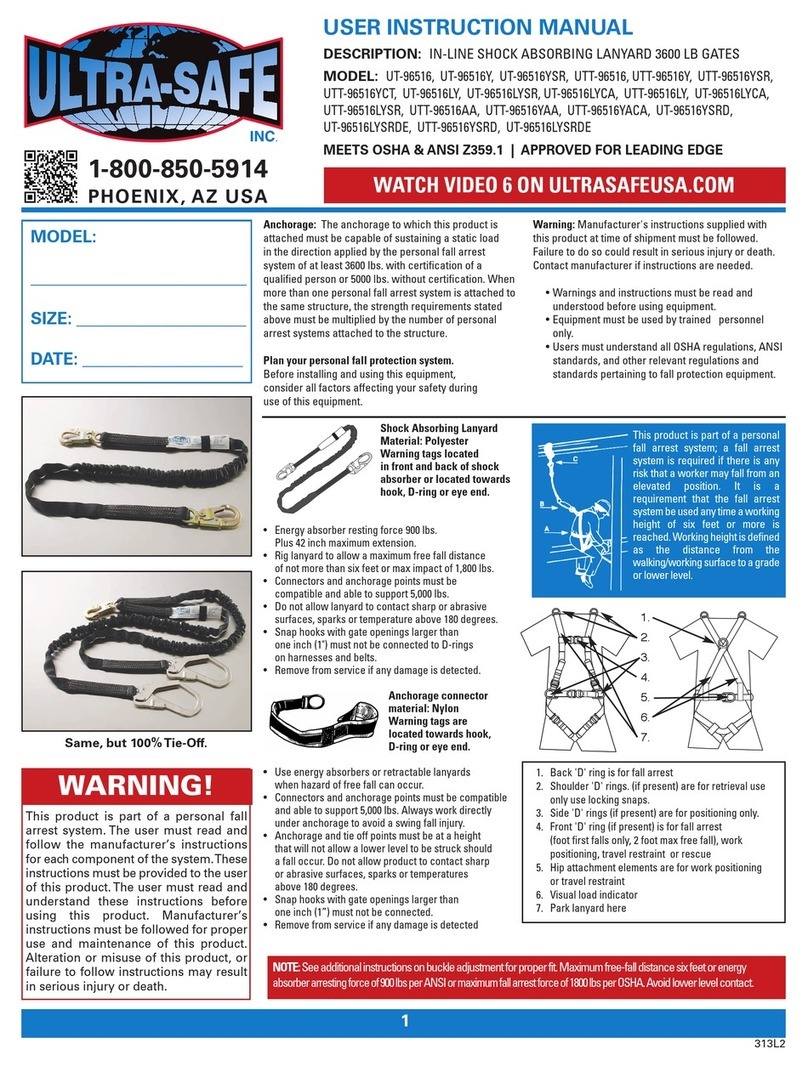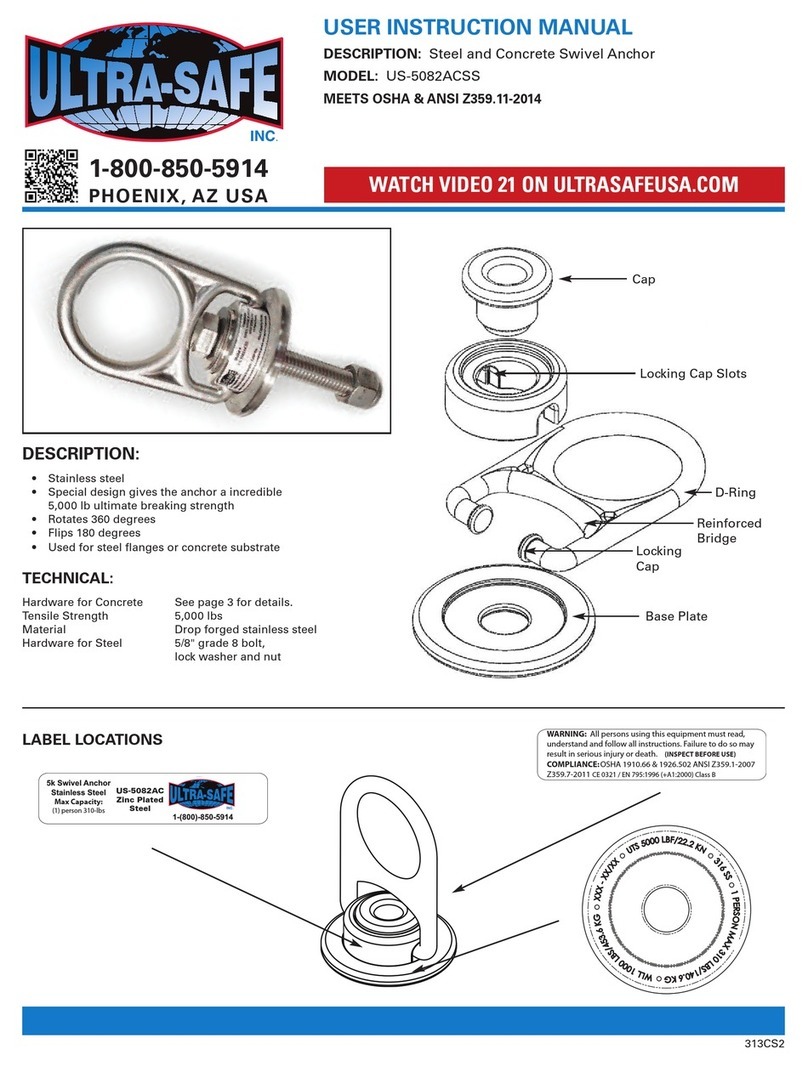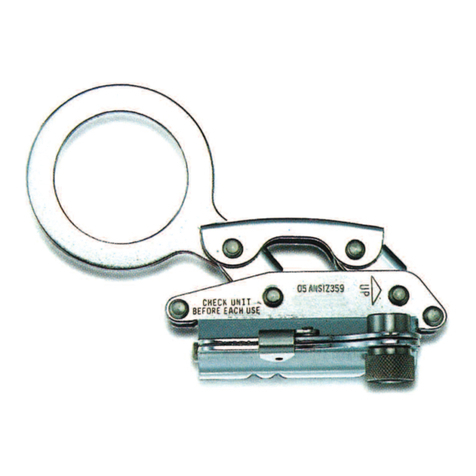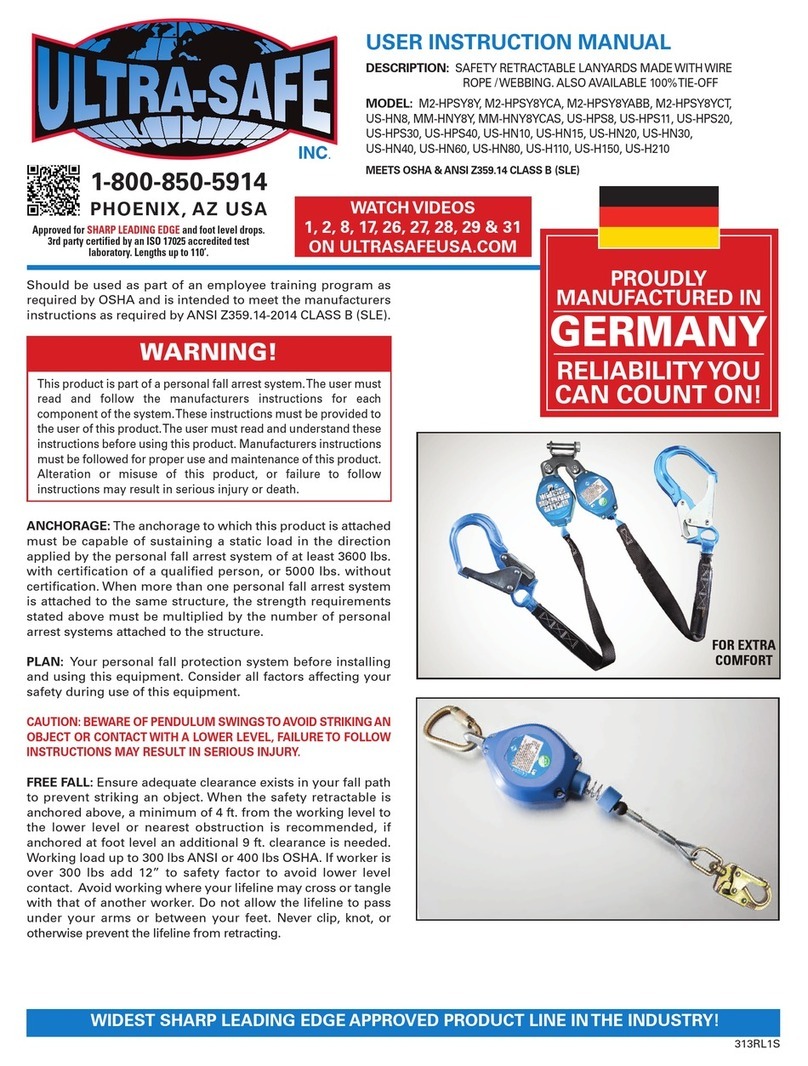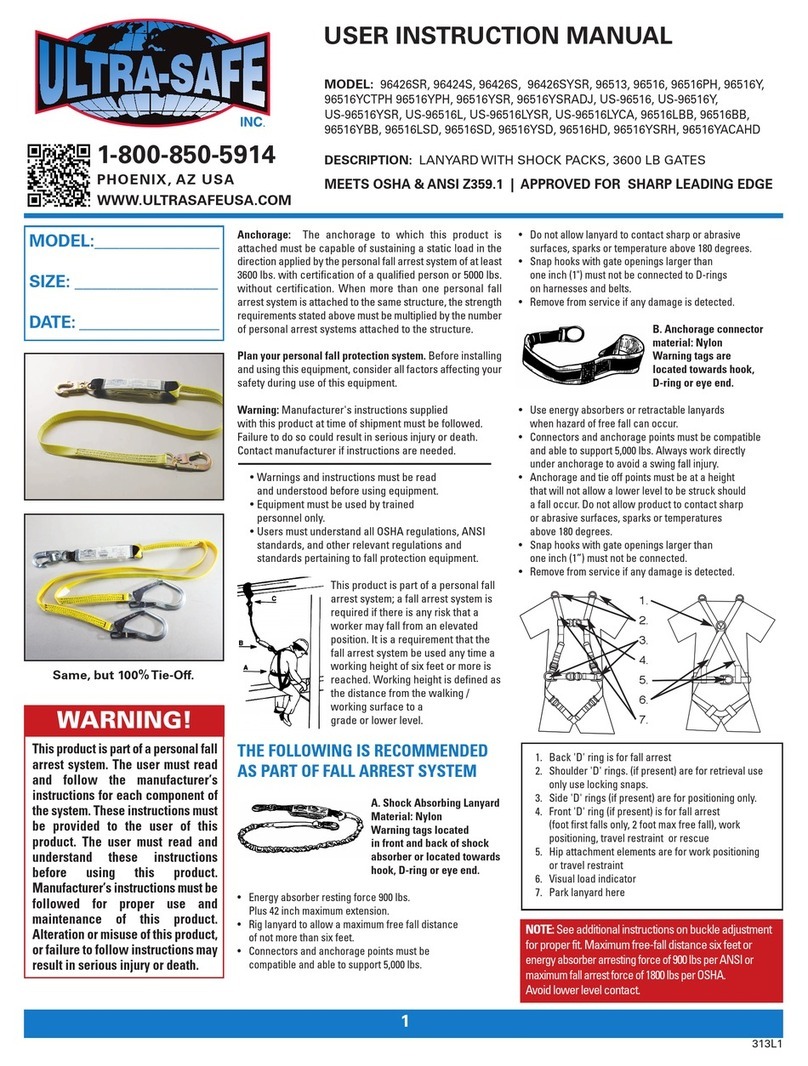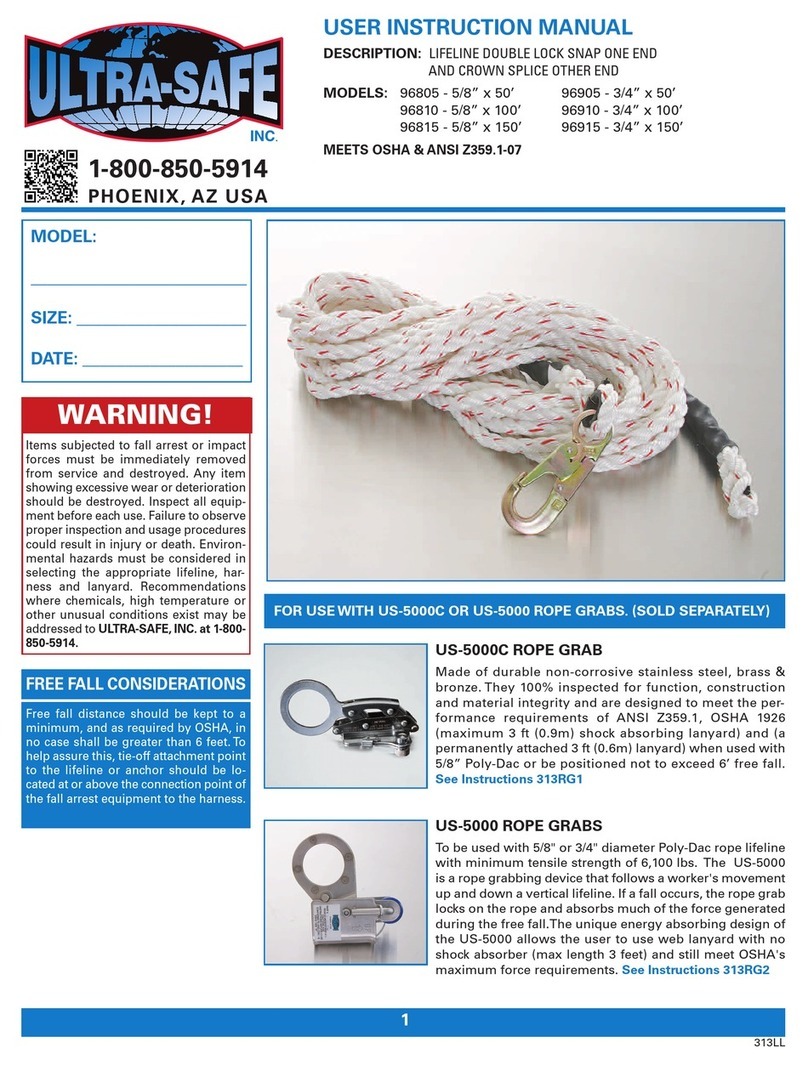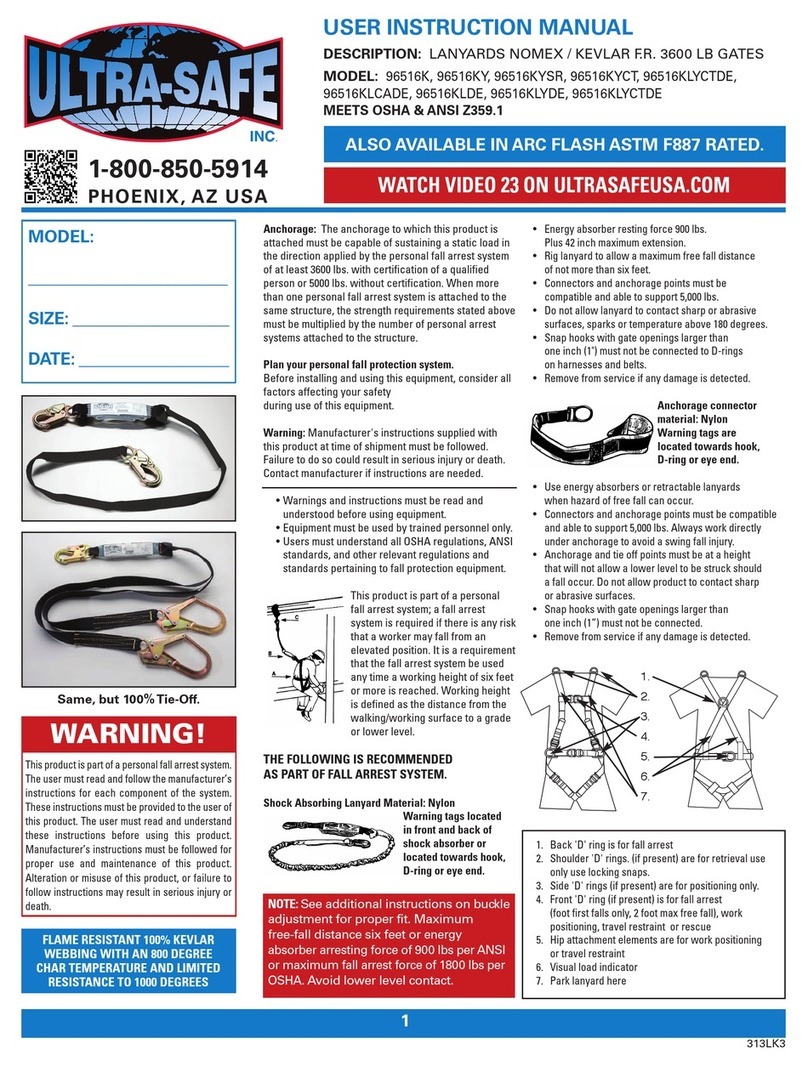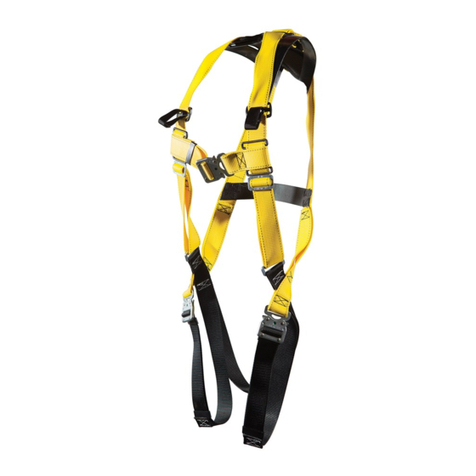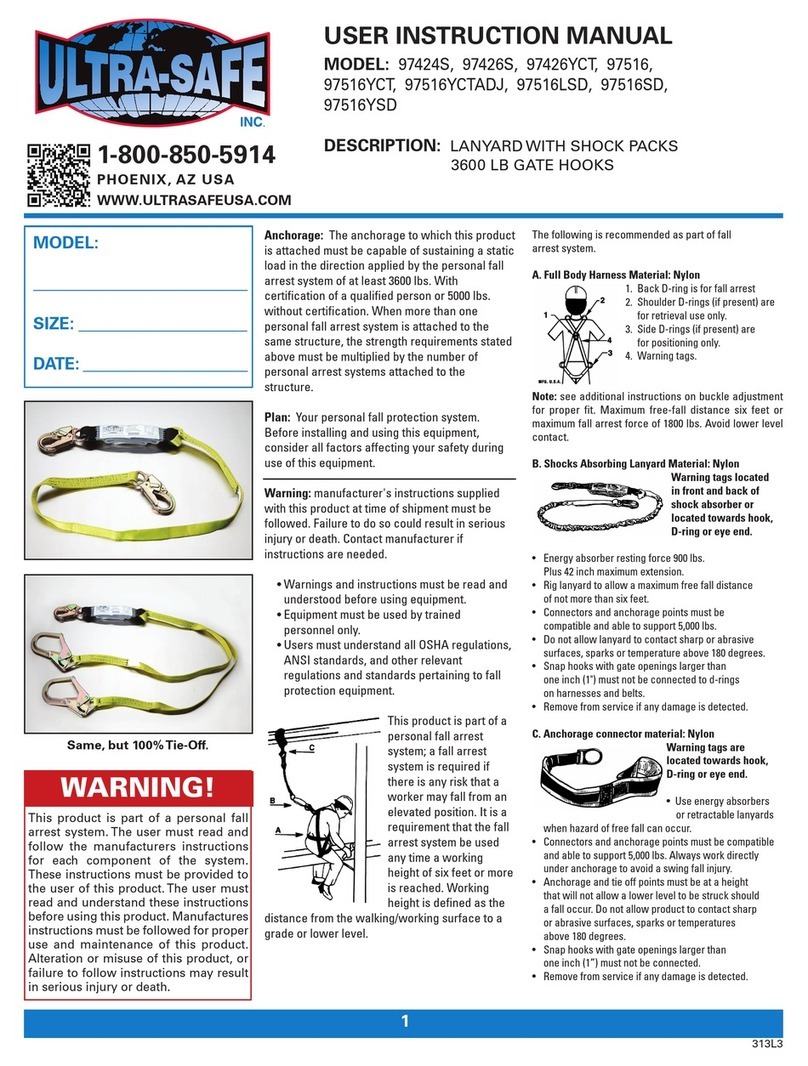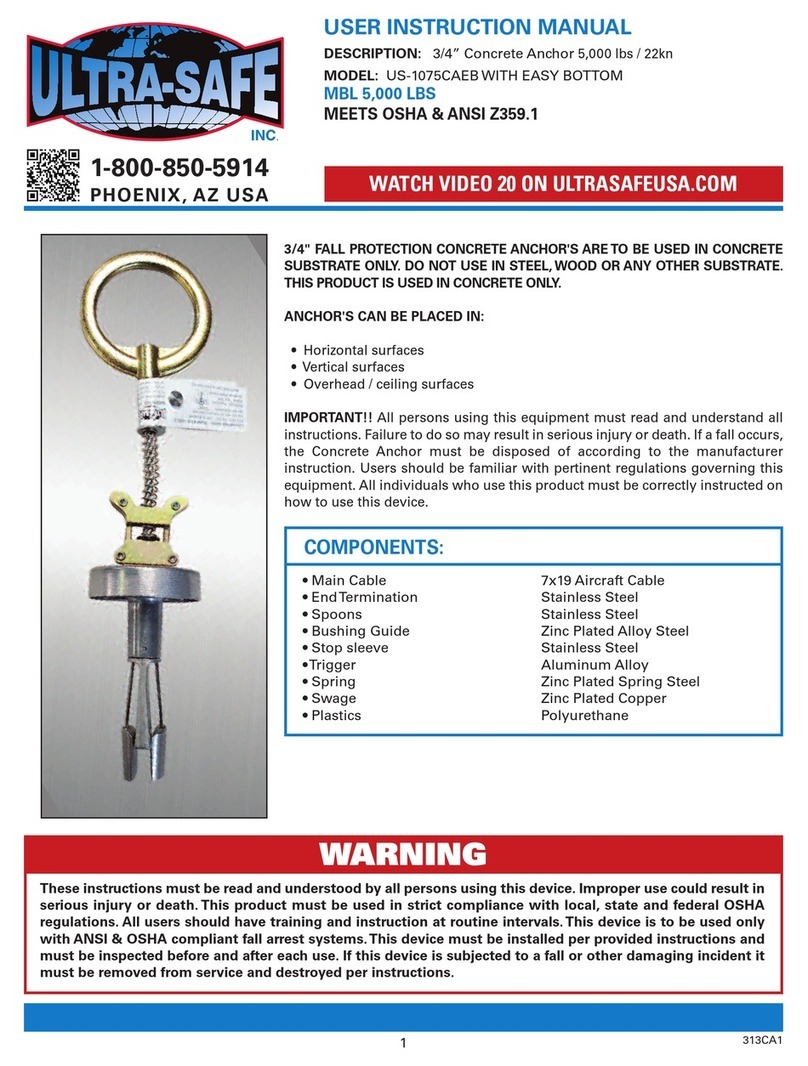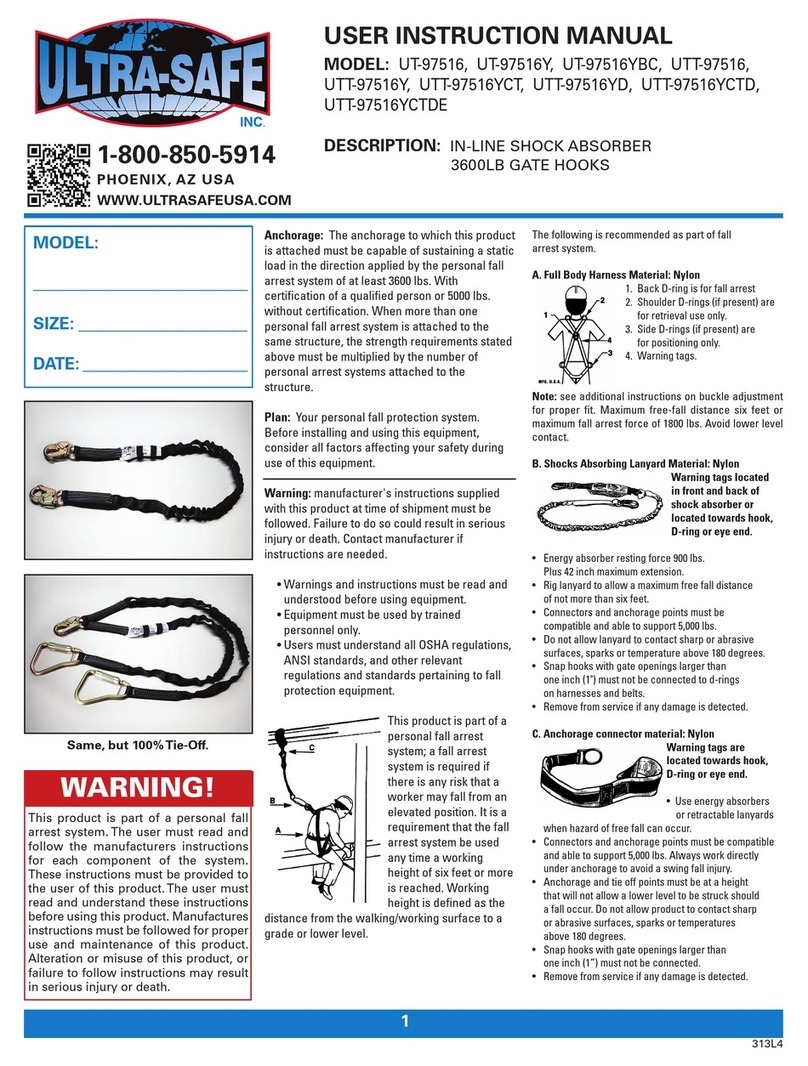
ATTACH
ENE GY
ABSO BE
ONLY TO
DO SAL
D- ING
MAXIMUM ATTACHMENT DISTANCE
WITH HOOK WITHOUT HOOK
ACCEPTABLE DESIGNED ETAINE
DO NOT
ATTACH
ENE GY
ABSO BE
TO ANCHO
When using lanyards commonly referred to as "100% tie-
off”, "Y" type, "double" or "twin leg" shock absorbing
lanyards. This supplement provides additional information
on the use of these types of lanyards that are used with a
personal fall arrest systems. Practices that must be
followed in order to use a 100% tie-off lanyard safely.
1. The shock absorber pack portion of the lanyard
assembly MUST be connected to the back dorsal D-ring
NLY, by way of a double locking lanyard snap hook
(other connectors provided, consult ULTRA-SAFE, INC.)
connect shock absorber directly to the dorsal D-ring.
2. Do not connect shock absorber to the anchorage point
at any time.
3. Do not connect the unused leg of the lanyard assembly
to any portion of the full body harness, unless a
specifically designed lanyard snap hook loop retainer
is provided for this purpose.
4. When connecting from one anchorage point to the next
(traversing a vertical or horizontal structure) do not
connect to an anchorage point further apart than, the
length of the lanyard.
5. When using a 100% tie-off lanyard assembly, do not
allow any part of the lanyard to pass under arms or legs.
6. Connection of both lanyard legs to separate anchorage
points is acceptable, as long as anchorage points are
within the length of the lanyard.
MAINTENANCE, SE VICING, STO AGE:
Clean lanyard with water and a mild detergent solution. Wipe
off hardware with a clean, dry cloth, and hang to air dry. Do not
dry with heat source. Excessive buildup of dirt, paint, etc., may
occur and prevent the lanyard from working properly, and in
severe cases degrade the webbing or rope to a point where it
has become weakened and should be removed from service.
If you have any questions concerning the condition or cleaning
of your lanyard, doubts about putting it into service or require
more information, contact Ultra-Safe, Inc.
AFTE A FALL: Components which have been subjected to
the forces of arresting a fail must be removed from service
and destroyed.
ESCUE PLAN: When using this equipment, the employer
must have a rescue plan and the means at hand to implement
the rescue, as well as communicate that plan to users,
authorized persons, and rescuers.
COMPATIBILITY OF CONNECTO S:
IMP RTANT: Use only connectors that are suitable to each
application and are compatible with connecting elements.
ATTACHING A TIE-BACK LANYA D: Place the tie-back
lanyard over the anchoring structure. Ensure the lanyard is not
twisted. Adjust the sliding D-ring or choke back hook so it
hangs below the anchoring structure. Attach the lanyard end
hook to the floating D-ring or choke back hook. Ensure the
lanyard is cinched tight around the anchorage during use or
choke back hook directly back to body of lanyard.
2
ANCHORAGE: Select a rigid anchorage point that
is capable of supporting the required loads. The
anchorage location must be carefully selected to
reduce possible free fall and swing fall hazards
and to avoid striking an object during a fall.
The anchorage should be generally level
(horizontal) to prevent the anchorage connector
from sliding down an incline when in use, which
could cause serious injury to the user.
CONNECTING TO ANCHORAGE OR ANCHORAGE
CONNECTOR: Always connect the energy
absorber end of the lanyard to the body support
(harness). Connect the lanyard end to the
anchorage or anchorage connector. Component
style energy absorbers should be connected to
the' body support first, then coupled to the rest of
the system. Some anchorage connector devices
may be supplied with permanently attached
energy absorber. Use of an additional energy
absorber or energy absorbing lanyard with these
types of subsystems is not recommended.
FREE FALL: Maximum free-fall distance six feet or
energy absorber arresting force of 900 lbs per ANSI or
maximum fall arrest force of 1800 lbs per SHA.
FALL CLEARANCE: Should a fall occur, there
must be sufficient clearance in the fall area to
arrest the fall before striking the ground or other
object. Energy absorbers can extend the fall
arrest distance by up to 52 inches. The
illustration to the right shows how to estimate fall
clearance distance when using an energy
absorbing lanyard or energy absorber
subsystem. ther factors may influence the
required clearance distances. For example,
using an energy absorbing lanyard or energy
absorber with a rope grab (fall arrestor) may
require additional clearance due to stretch in the
lifeline or sliding of the rope grab on the lifeline
during fall arrest. Some full body harness models
incorporate a sliding (positional) D-ring in the
back as the fall arrest attachment, movement of
this D-ring during fall arrest can increase the fall
clearance distance required. Use caution when
assembling system components that could act
to extend the fall arrest distance (and therefore
fall clearance required). Refer to manufacturer's
instructions for each part of the system for more
information on fall clearance.
CAUTION: When working near moving
machinery, make sure Ultra-Safe components
are free from entanglement.
Swing Fall
Hazard
Energy
Absorbing
Lanyard
Energy
Absorbing
Lanyard
Connecting
Subsystem
Anchorage
Connector
Anchorage
Connector
Anchorage
Connector
WARNING: Do not alter or intentionally misuse this equipment. Consult Ultra-Safe, Inc. when using this equipment In combination with components or subsystems other than those
described in this manual. Some subsystem and component combinations may interfere with the operation of this equipment. Use caution when using this equipment around moving
machinery, electrical hazards, chemical hazards, sharp edges, or overhead materials that may fall onto the lanyard. Do not loop the lanyard around small structural members.
Failure to heed this warning may result in equipment malfunction, serious injury, or death. Any repair must be performed by Ultra-Safe, Inc. or an authorized repair station only.
• Connectors must be compatible with the anchorage
or other system components.
• Connectors must be compatible in size, shape, and strength
• Non-compatible connectors may unintentionally disengage
Do not allow gate to
contact anchorage
member.
Tie-off point diameter should be
large enough so that hook does
not contact anchor point.
Corre t In orre t
Anchor
Point
Nearest
bstruction
(Lower Level)
NOTE:
Allow a minimum
of 17’ 10” from
anchor point to
lower level.
Clearance to bstruction
1 1/2ft (.5m) Min Allowed
